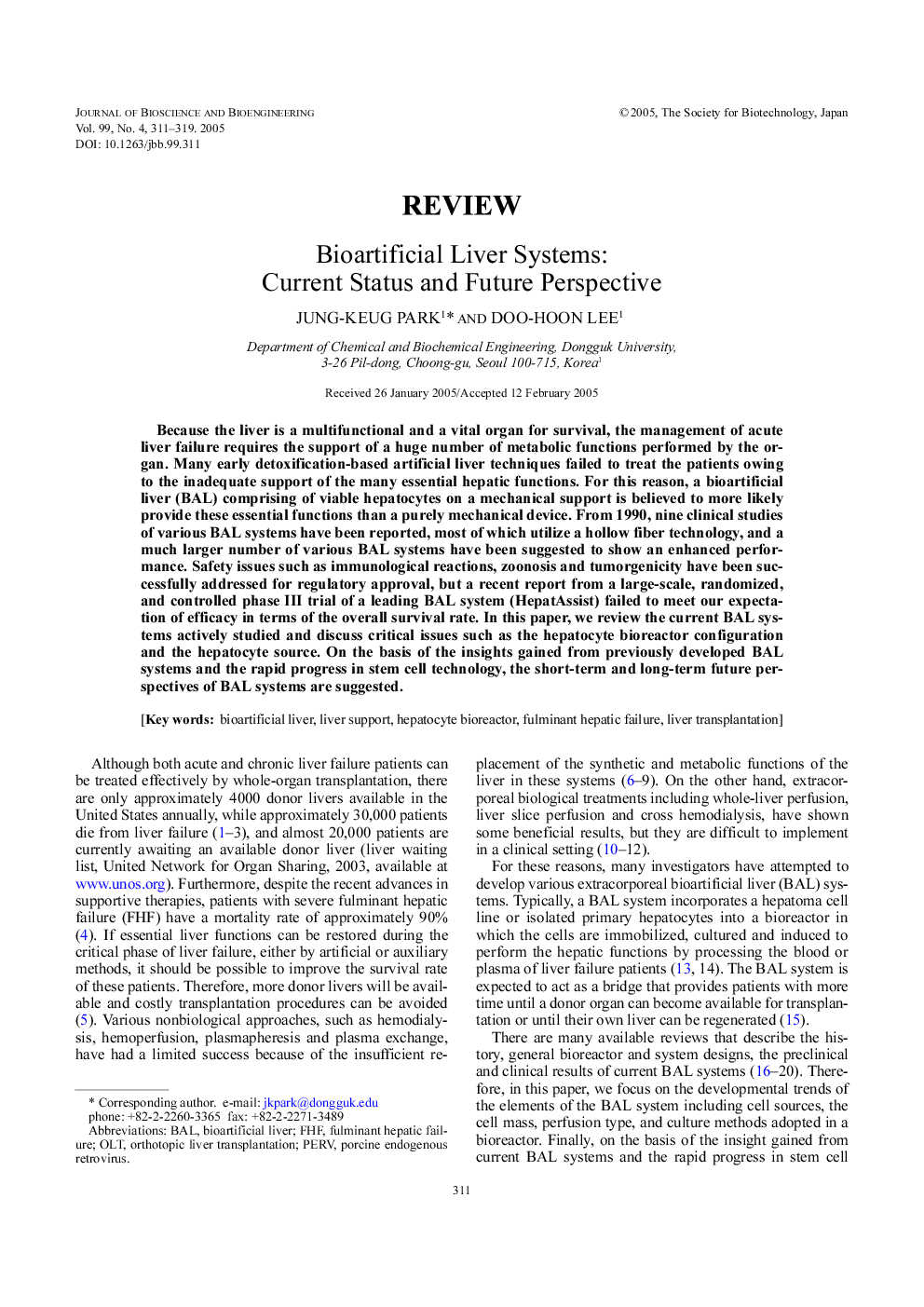| Article ID | Journal | Published Year | Pages | File Type |
|---|---|---|---|---|
| 9603226 | Journal of Bioscience and Bioengineering | 2005 | 9 Pages |
Abstract
Because the liver is a multifunctional and a vital organ for survival, the management of acute liver failure requires the support of a huge number of metabolic functions performed by the organ. Many early detoxification-based artificial liver techniques failed to treat the patients owing to the inadequate support of the many essential hepatic functions. For this reason, a bioartificial liver (BAL) comprising of viable hepatocytes on a mechanical support is believed to more likely provide these essential functions than a purely mechanical device. From 1990, nine clinical studies of various BAL systems have been reported, most of which utilize a hollow fiber technology, and a much larger number of various BAL systems have been suggested to show an enhanced performance. Safety issues such as immunological reactions, zoonosis and tumorgenicity have been successfully addressed for regulatory approval, but a recent report from a large-scale, randomized, and controlled phase III trial of a leading BAL system (HepatAssist) failed to meet our expectation of efficacy in terms of the overall survival rate. In this paper, we review the current BAL systems actively studied and discuss critical issues such as the hepatocyte bioreactor configuration and the hepatocyte source. On the basis of the insights gained from previously developed BAL systems and the rapid progress in stem cell technology, the short-term and long-term future perspectives of BAL systems are suggested.
Keywords
Related Topics
Physical Sciences and Engineering
Chemical Engineering
Bioengineering
Authors
Jung-keug Park, Doo-hoon Lee,
